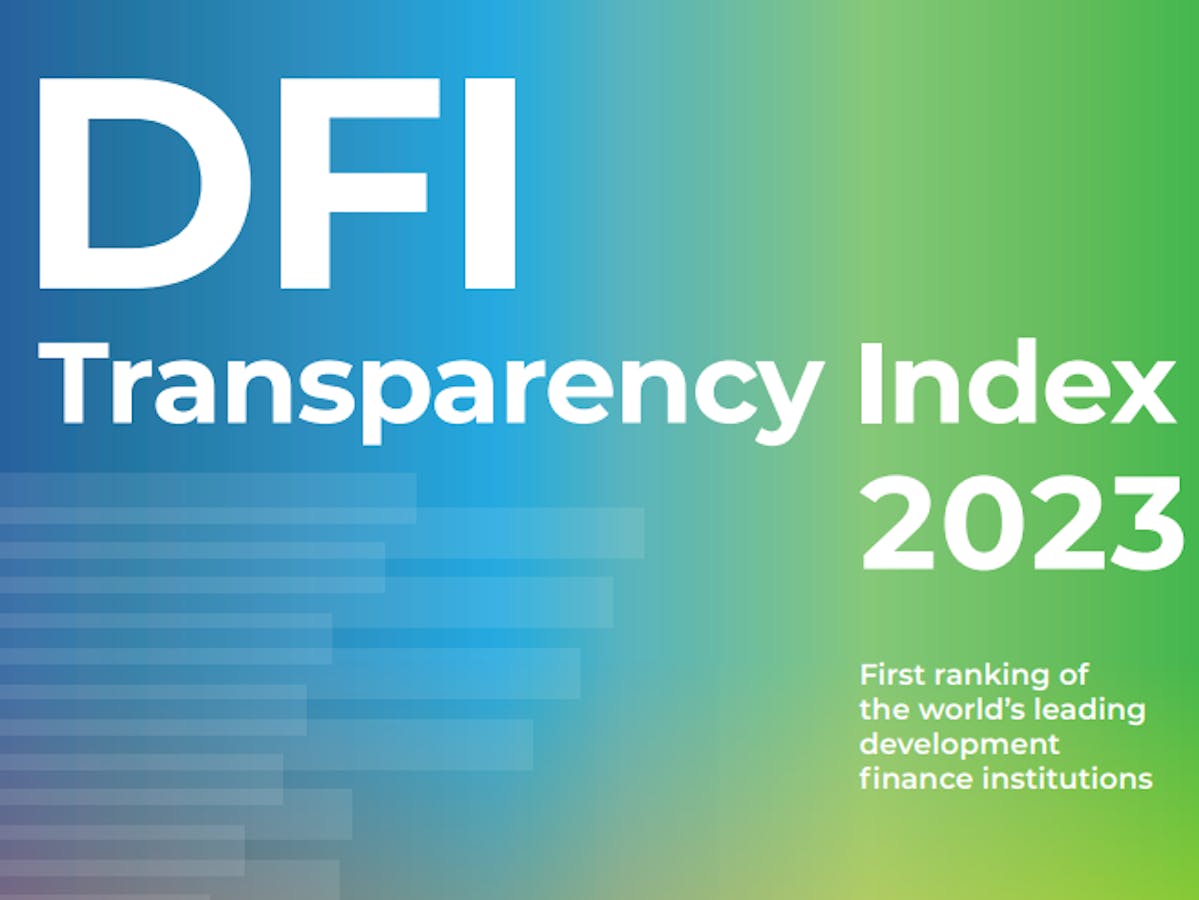BYGARY FORSTERANDPAUL JAMES|JAN 25, 2023|NEWS
New global index shows world’s leading development banks are not transparent enough
The first ever ranking of the transparency of development finance institutions (DFIs) highlights a startling lack of public disclosure. The inaugural edition of the DFI Transparency Index, launched today by Publish What You Fund, examines the transparency of 30 DFI operations, with combined assets of $2 trillion. It reveals that:
- Across the board DFIs are insufficiently transparent. This is especially the case for non-sovereign (private sector) operations.
- Critically, DFIs are not providing evidence of impact, data regarding mobilisation, or proof of accountability to communities. The lack of disclosure around results and mobilisation limits the ability of stakeholders to ensure that DFIs are investing in the most impactful ways and mobilising private finance efficiently.
- For many DFIs, even basic information about their investments is not publicly available.
- But progress is being made. Many of the DFIs included in the Index have committed time and resources to improving the transparency of their operations, using Publish What You Fund’s DFI Transparency Tool.
- The International Finance Corporation (IFC) was ranked as the most transparent non-sovereign (private sector) DFI in the assessment, scoring 54.4 out of 100. The rest of the top five positions in the non-sovereign assessment were filled by the African Development Bank (AfDB), Asian Development Bank (AsDB), European Bank for Reconstruction and Development (EBRD), and IDB Invest.
- The AsDB was ranked as the most transparent DFI in the analysis of sovereign (public sector) operations, scoring 75.9 out of 100. The rest of the top five positions in the sovereign assessment were filled by AfDB, the Inter-American Development Bank (IDB), EBRD and the Asian Infrastructure Investment Bank (AIIB).
- The US International Development Finance Corporation (DFC) was the top ranking bilateral DFI.
Gary Forster, CEO of Publish What You Fund, said:
“The launch of this report marks a moment of reckoning for DFIs and their shareholders. The mandates of DFIs – to build markets, drive impact and be socially responsible – require them to be transparent in order to demonstrate what is possible – to each other, to the market and to the communities where they operate. However, the dearth of information about impact, mobilisation and accountability to communities raises some serious questions about the difference these organisations are making and how effectively their capital is being applied. Meanwhile our work has shown that commercial confidentiality arguments need to be challenged as they are being used too liberally. The silver lining is the progress we’ve seen in the past year as leading DFIs have engaged with us to improve their disclosure.”
Paul James, who researched and authored the report, said:
“Multilateral and bilateral development banks are operating in the face of mounting and urgent global crises – from health to debt, food to climate. $2.4 trillion needs to be mobilised each year for climate finance alone, according to recent estimates. So it’s crucial that the investments of our financial institutions have the desired impact, and are effective in mobilising greater investments. The lack of transparency that the Index found on these issues is concerning. But we’re hopeful that DFIs will take on the actions we have highlighted and work with us to improve their transparency.”
The Index report makes five main recommendations for DFIs to improve their transparency, including:
- Report impact data
- Publish disaggregated mobilisation data
- Improve transparency around assurance of disclosure to project affected people
- Disclose high risk financial intermediary sub-investments
- Increase standardisation of data
The DFI Transparency Index report provides further details of the findings, recommendations and ranking.
The DFI Transparency Index website provides details of the scores and analysis of the performance of each DFI.

